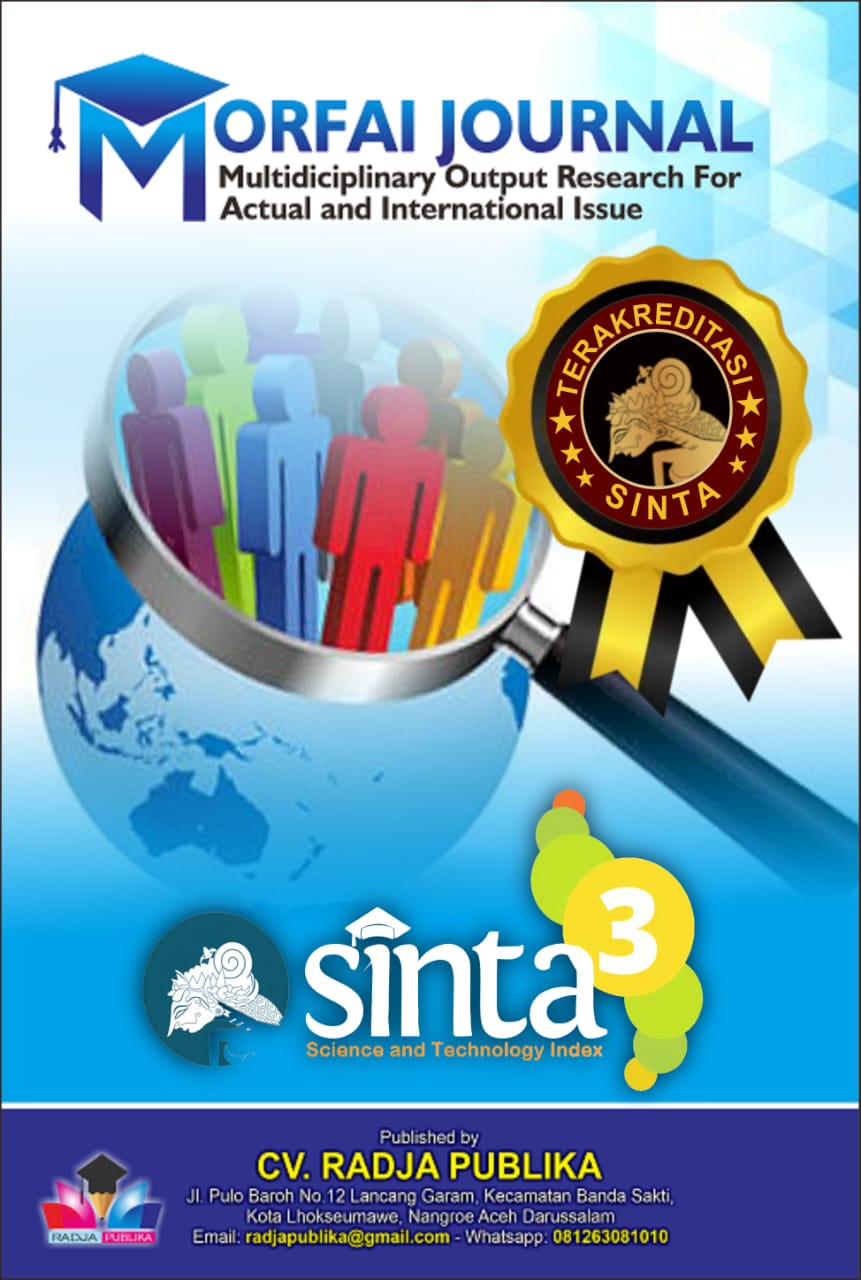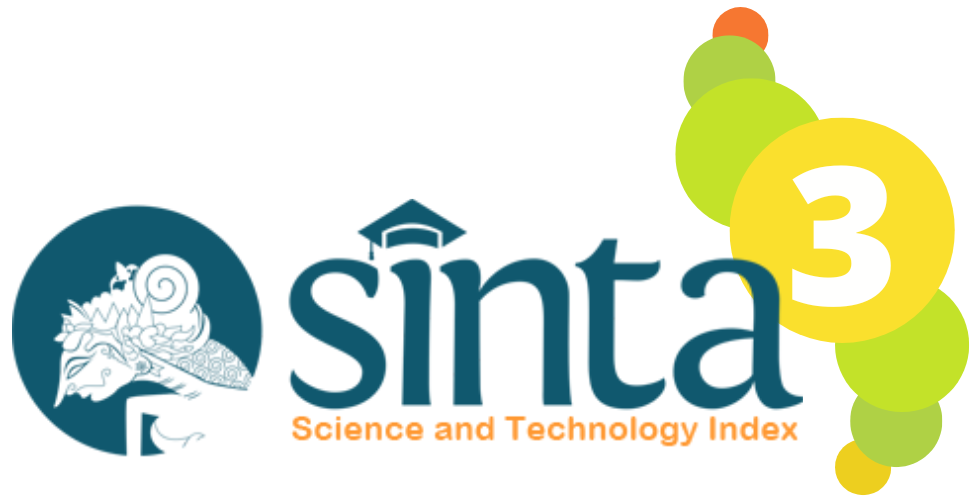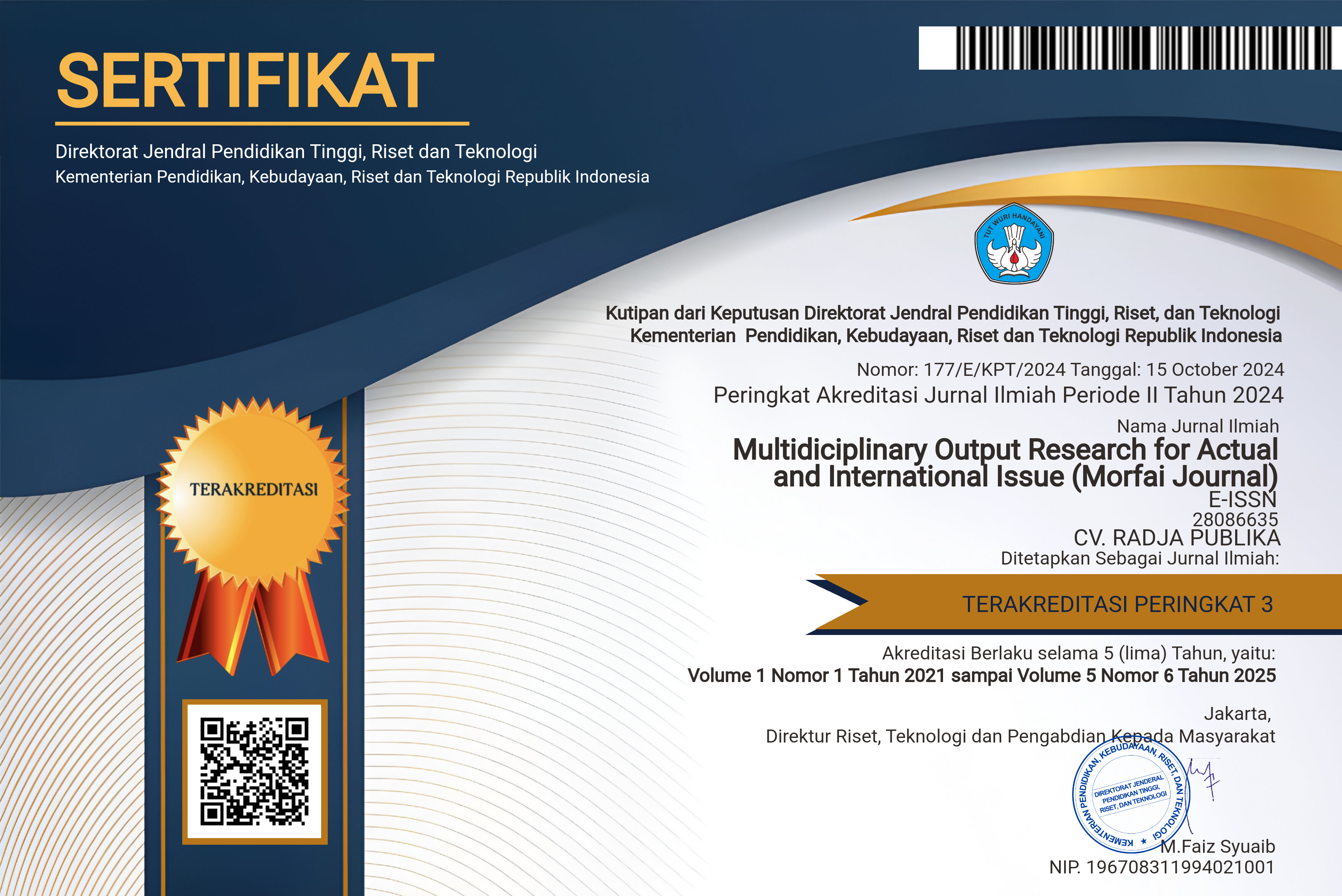ECO-ENZYME BASED ON HORTICULTURAL WASTE'S WITH VARYING CONCENTRATION ON THE ACTIVITY OF CANDIDA ALBICANS FUNGUS IN VITRO
DOI:
10.54443/morfai.v5i5.4395Published:
2025-11-10Downloads
Abstract
This study aims to evaluate the potential of eco-enzyme (EE) derived from horticultural waste as an antifungal agent against Candida albicans, a major pathogen responsible for infections in both humans and plants. Eco-enzyme is a product of fermentation that involves using organic waste, such as fruit and vegetable peels, which are often discarded and contribute to environmental pollution. In this research, eco-enzyme was prepared using a variety of horticultural waste, including pineapple, orange, papaya, and mango peels. The eco-enzyme was then tested at various concentrations (1:0, 1:10, 1:50, and 1:100) to assess its antifungal activity against Candida albicans using the in-vitro disk diffusion method. The results indicated that eco-enzyme, particularly at the 1:50 dilution, demonstrated significant antifungal activity, with a clear inhibition zone observed around the disc. The presence of bioactive compounds such as flavonoids, tannins, and saponins in the eco-enzyme is believed to be responsible for its ability to inhibit fungal growth by disrupting the cell membrane structure and metabolic functions of the pathogen. These findings suggest that eco-enzyme can serve as an effective natural alternative to conventional chemical antifungal agents, offering a more sustainable and eco-friendly solution for managing fungal infections. Furthermore, this study emphasizes the importance of utilizing agricultural waste for eco-enzyme production, providing an innovative way to address the global challenge of organic waste disposal while promoting sustainable agricultural practices. The research contributes to the growing body of knowledge on the benefits of eco-enzyme in both agricultural and public health applications, offering promising possibilities for its wider use in fungal disease management
Keywords:
eco-enzyme, Candida_albicans, antifungal, organic_waste, natural_disinfectantReferences
Apriliansyah, K. B., & Wibisono, M. H. (2022). Pemanfaatan limbah kulit buah dan sayur menjadi eco enzyme. Enviromental Science Journal (ESJo): Jurnal Ilmu Lingkungan, 1(1), 1–5.
Astari, S. M., Rialita, A., & Mahyarudin, M. (2021). Aktivitas Antibakteri Isolat Bakteri Endofit Tanaman Kunyit (Curcuma longa L.) Terhadap Pertumbuhan Staphylococcus aureus. Jurnal Fitofarmaka Indonesia, 8(2), 9–16. https://doi.org/10.33096/jffi.v8i2.644
Cahyati, A. R., Rusmana, R., Sulistyorini, E., & Firnia, D. (2024). Optimalisasi Pertumbuhan dan Hasil Bawang Merah (Peran Komposisi Media Tanam dan Konsentrasi Pupuk Organik). Jurnal Ilmiah Membangun Desa Dan Pertanian, 9(5), 479–489. https://doi.org/10.37149/jimdp.v9i5.1614
Davis, W. W., & Stout, T. R. (1971). Disc plate method of microbiological antibiotic assay. I. Factors influencing variability and error. Applied Microbiology, 22(4), 659–665. https://doi.org/10.1128/aem.22.4.659-665.1971
Erianti, Rusmana, R., Rohmawati, I., & Utama, P. (2024). EFEKTIVITAS PUPUK KOTORAN SAPI DAN Trichoderma harzianum PADA TANAMAN BAWANG MERAH (Allium ascalonicum L.). Jurnal Ilmiah Membangun Desa Dan Pertanian (JIMDP), 10(01), 24–33.
Faradiba, F., Syarif, R. A. A., Khaira, A. T. M., & Alyanti, T. K. (2024). Pengaruh Variasi Metode Ekstraksi Jahe dan Serai terhadap Aktivitas Antiinflamasi pada Penghambatan Denaturasi Protein. Jurnal Fitofarmaka Indonesia, 11(1), 33–40. https://doi.org/10.33096/jffi.v11i1.1184
Ginting, N., Hasnudi, H., & Yunilas, Y. (2021). Eco-enzyme Disinfection in Pig Housing as an Effort to Suppress Esherechia coli Population. Jurnal Sain Peternakan Indonesia, 16(3), 283–287. https://doi.org/10.31186/jspi.id.16.3.283-287
Ginting, N., & Prayitno, L. (2022). Dilution of Eco Enzyme and Antimicrobial Activity Against Staphylococcus aureus Animal Production Study Program , Faculty of Agriculture , Universitas Sumatera Utara , Padang. 123–128. https://doi.org/10.33772/jitro.v9i1.19705
Lubis, N., Damayanti, R., & Wardani, S. (2024). Antibacterial Activity of Ecoenzymes with Various Dilutions Against Escherichia Coli. 1St International Conference of Digital Sciences and Engineering Technology, 122–127.
Lubis, N., Damayanti, R., & Wardani, S. (2025). Antimicrobial Activity of Eco-enzymes with Various Dilutions As A Natural Disinfectant. Jurnal Penelitian Pendidikan IPA, 11(5), 506–513. https://doi.org/10.29303/jppipa.v11i5.11052
Lubis, N., Tarigan, R. R. A., Tarigan, R. K. hadinata, & Hafiq, M. I. (2024). Eco-enzim Berbahan Dasar Limbah Rumah Tangga Terhadap Aktivitas Fusarium oxysporum. BIOFARM Jurnal Ilmiah Pertanian, 20(2), 230–235.
Mavani, H. A. K., Tew, I. M., Wong, L., Yew, H. Z., Mahyuddin, A., Ghazali, R. A., & Pow, E. H. N. (2020). Antimicrobial efficacy of fruit peels eco-enzyme against Enterococcus faecalis: An in vitro study. International Journal of Environmental Research and Public Health, 17(14), 1–12. https://doi.org/10.3390/ijerph17145107
Megasari, D., Maulana, A. A., Jasmine, A., Damayanti, D. R., & Khori, S. (2025). PENGARUH ECO-ENZYME TERHADAP METAMORFOSIS DAN MORTALITAS ULAT GRAYAK Spodotera litura F. (LEPIDOPTERA: NOCTUIDAE). Jurnal Agrotek Tropika, 13(2), 259–264.
Nabila, J., Fatmawaty, A. A., Roidelindho, K., & Susiyanti, S. (2025). Efektivitas Pupuk Kotoran Sapi dan Pemacu Pertumbuhan Akar Bambu terhadap Hasil Tanaman Terung Ungu (Solanum melongena L.). Jurnal Ilmiah Membangun Desa Dan Pertanian, 10(1), 98–108. https://doi.org/10.37149/jimdp.v10i1.1790
Novianti, A., & Muliarta, I. N. (2021). Eco-Enzym Based on Household Organic Waste as Multi- Purpose Liquid. AGRIWAR JOURNAL, 1(1), 13–18.
Permatananda, P. A. N. K., Pandit, I. G. S., Cahyawati, P. N., & Aryastuti, A. A. S. A. (2023). Antimicrobial Properties of Eco Enzyme: A Literature Review. Bioscientia Medicina : Journal of Biomedicine and Translational Research, 7(6), 3370–3376. https://doi.org/10.37275/bsm.v7i6.831
Ramadani, A. H., Karima, R., & Ningrum, R. S. (2022). Antibacterial Activity of Pineapple Peel (Ananas comosus) Eco-enzyme Against Acne Bacterias (Staphylococcus aureus and Prapionibacterium acnes). Indo. J. Chem. Res., 9(3), 201–207. https://doi.org/10.30598//ijcr
Rusdianasari, Syakdani, A., Zaman, M., Sari, F. F., Nasyta, N. P., & Amalia, R. (2021). Production of Disinfectant by Utilizing Eco-enzyme from Fruit Peels Waste. International Journal of Research in Vocational Studies (IJRVOCAS), 1(3), 01–07. https://doi.org/10.53893/ijrvocas.v1i3.53
Siregar, M. A., Lubis2, N., & Tarigan, R. R. A. (2025). Produksi Tanaman Selada ( Lactuca Sativa ) Dengan Variasi Pupuk Organik Cair Pada Sistem Hidroponik. Nasional Teknologi Komputer Vol.5;, 5(2), 68–82.
Wulandari, A., Farida, Y., & Taurhesia, S. (2020). Perbandingan Aktivitas Ekstrak Daun Kelor Dan Teh Hijau Serta Kombinasi Sebagai Antibakteri Penyebab Jerawat. Jurnal Fitofarmaka Indonesia, 7(2), 23–29. https://doi.org/10.33096/jffi.v7i2.535
Yulistia, E., & Chimayati, R. L. (2021). Pemanfaatan Limbah Organik menjadi Ekoenzim. Unbara Environment Engineerring Journal, 02(01), 1–6.
License
Copyright (c) 2025 Najla Lubis, Ruth Riah Ate Tarigan, Dwi Hayati

This work is licensed under a Creative Commons Attribution 4.0 International License.











